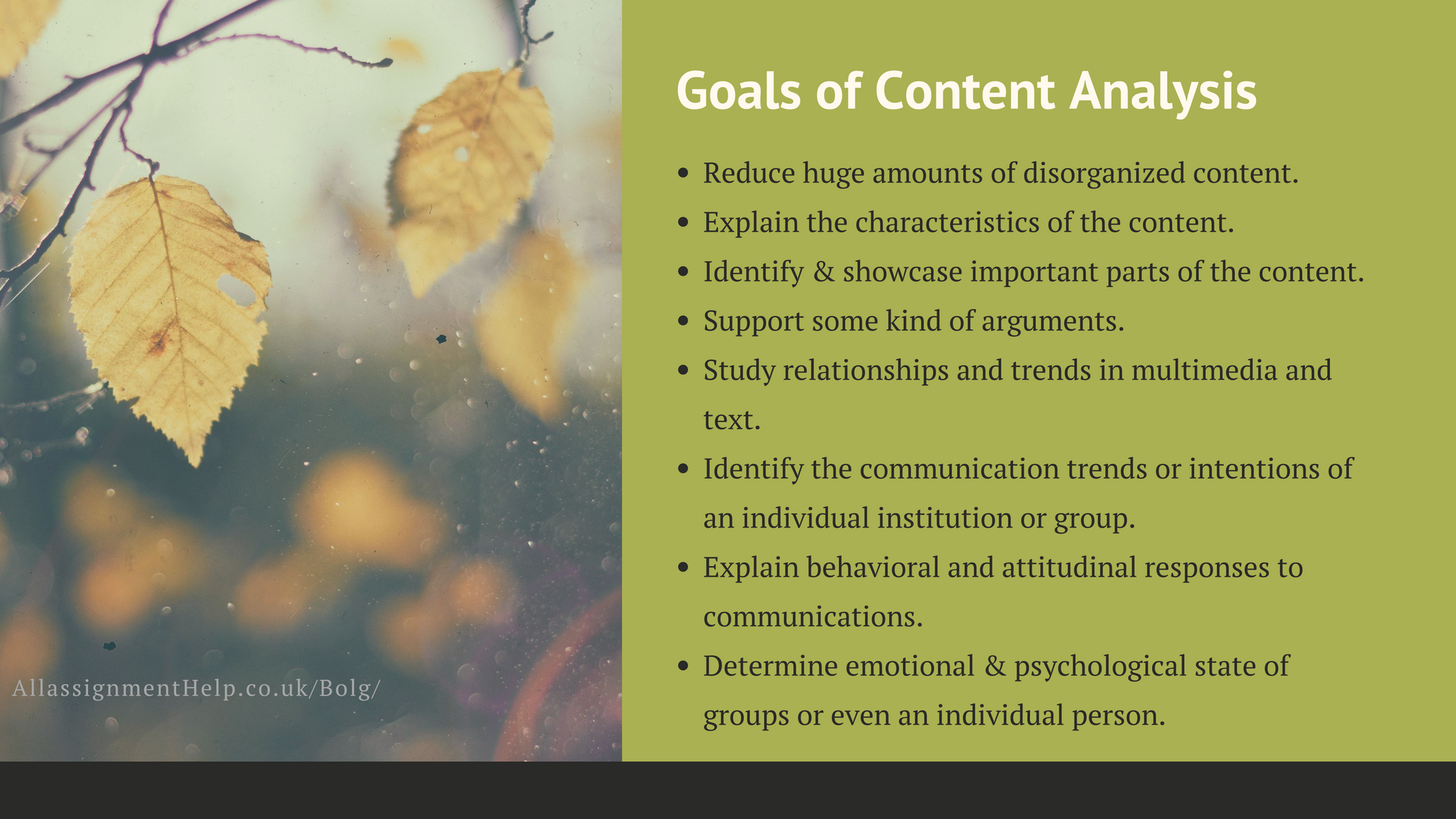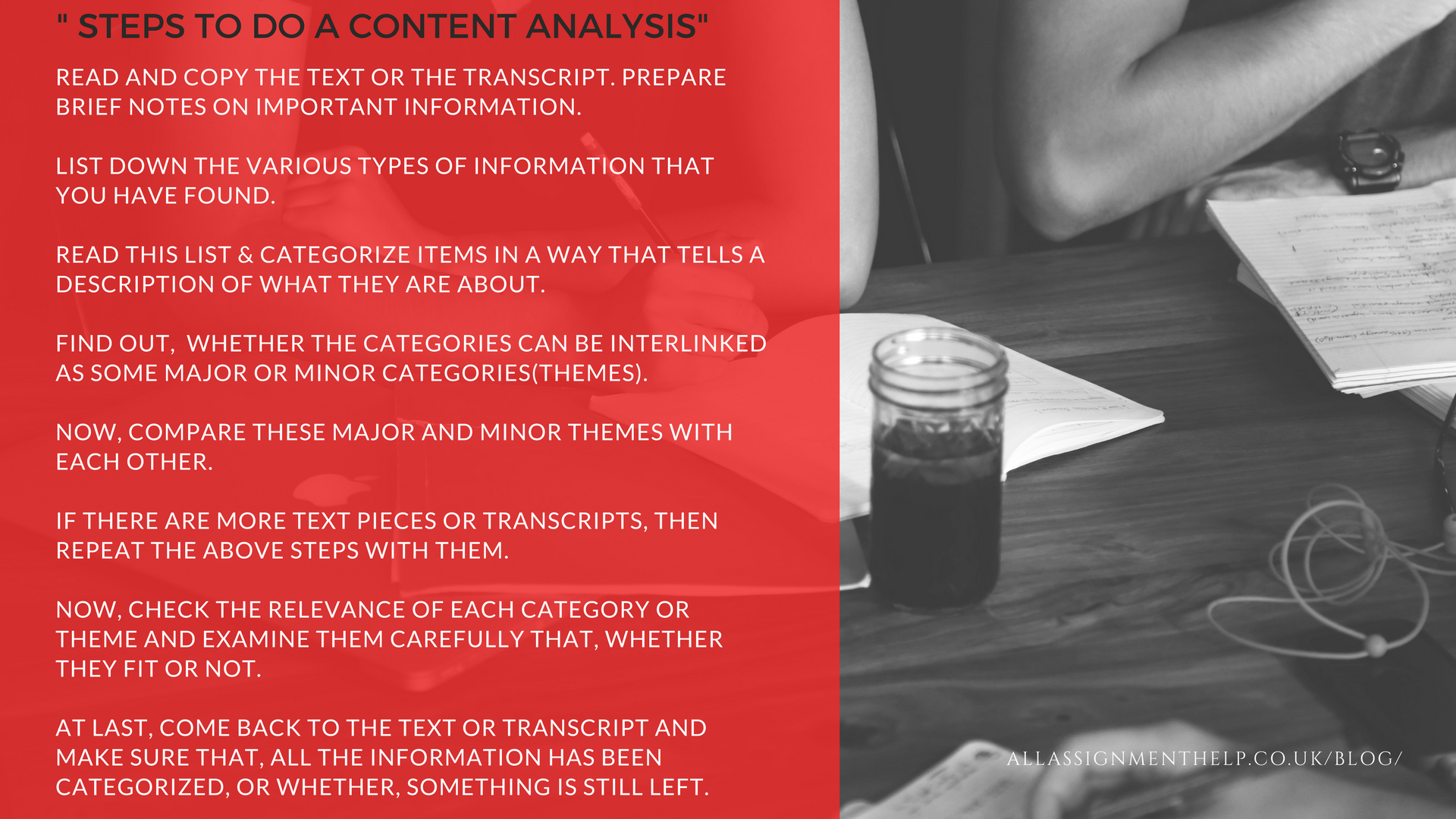Hi guys. In this article, I will talk about content analysis. Content is an integral part of any textual or visual presentation. There are various reasons to do content analysis.
Content analysis is a type of research, which is used to study different documents and artifacts. It includes studying different pictures, texts, video or even audio.
There is a proper methodology for successful content analysis. I will share it later in this article. To start on with this article, I am sharing following points which are covered in here:
- Content Analysis Definition
- Types of Content Analysis
- Advantages & Disadvantages of content analysis
- How to do Content Analysis?
I will discuss each point in brief and I hope that, you will get all your answers. So, let’s get started.
1) What is Content analysis?
Content analysis is a kind of tool which is used to study the existence of some concepts or words present in textual or visual forms. Texts include various documents, books, newspaper articles, etc. Visuals include advertising, theater, movies, etc. Analyses can also be done on any communication source which occurs.
Analysts or we can say, researchers, analyze the presence, relationships and meanings of such words and concepts. They then make a conclusion based on the messages found in the text, the writers & audience, etc.
Content analyses include systematic observation & reading of texts or other artifacts which are classified according to labels or codes. Codes are there to reveal the existence of different meaningful and interesting patterns.
After classifying different media under codes, a researcher can find out the proportions of patterns in the text. Correlations between the patterns are also revealed.
These days, use of computers for content analysis has increased. It is to do the coding of the documents automatically. Computational techniques give you a brief description of word frequencies and length of documents.
Goals of Content Analysis

Content analysis is considered as a broad usage of various techniques. There are few questions which must be looked out and answered, with the help of content analysis. Following are the questions:
- Which data is being studied?
- How is the data explained?
- What is the related context?
- The data is taken from what population?
- What thing is to be measured?
- What are the limitations for the analysis?
The most simple and objective form of content analysis prefers text like word frequencies, duration of television or radio, the page area covered by a newspaper column, etc. Keywords which are in context, hold the words within their textual context.
Content analysis deals with all kinds of text from written to visual and many more. Following are the five types of texts:
- Written text: books, newspaper, etc.
- Iconic text: text in form of drawings, icons, etc.
- Oral text: theatrical performances, speech, etc.
- hypertexts: texts which are found on Internet.
- Audio-Visual text: TV programs, videos and movies.
Goal Of Content Analysis is to:
- Reduce huge amounts of disorganized content.
- Explain the characteristics of the content.
- Identify & showcase important parts of the content.
- Support some kind of arguments.
- Study relationships and trends in multimedia and text.
- Identify the communication trends or intentions of an individual institution or group.
- Explain behavioral and attitudinal responses to communications.
- Determine emotional & psychological state of groups or even an individual person.
Importance of Content Analysis & Qualitative Content Analysis
In today’s world, there is a lot of competition in the market. The one who presents the best has the chance to be on top. You need to be sure about your content which helps you grow. Your content will be out there, competing amongst content of many other competitors.
The market is a preying ground, where all the eyes are set upon to gain the top positions. But, what is that one thing that, helps you to reach that place?
Well, you need to put forward useful, engaging and relevant information to your customers. Everybody is providing content but what makes you shine is the right content which stands unique amongst others. No marketing strategy will work if, you put up the same old boring content in front of the audience.
Today’s readers are very smart, and they look for unique things which are easy to understand and useful if they read it.
Content analysis helps you to put in content, that matches to the users need, in the best possible manner. It helps you to fulfill specific interests and needs of your targeted audience.
Qualitative Content analysis mainly helps you to make your content quality finer. You need to bring in more fresh flavours. It can happen by putting in an interesting story, which will keep the readers bound till the end and then make them pass it forward.
The qualitative Content analysis also helps you to work towards your targeted audience, and thus, you will be able to gain their views. It also helps you to polish your work and tune it according to the need. It helps you fight against all those other predators (competitors) out in the market. Remember, content is significant so make sure to present the best. 🙂
Content Analysis Psychology
If we talk about history, then content analysis used to be time-consuming. Things were done manually, and there were punch cards & human coders. Human error was arising due to these impractical methods for analyzing large pieces of texts.
Later, things got evolved and today, we have different techniques to analyze the data in front of us. Researchers are now able to analyze larger text pieces, and they are focusing on concepts rather than the single words. They also now work on semantic relationships and, not on just frequency counts.
The idea behind the content analysis is to turn the verbal information into a numerical data. In this way, you can briefly describe the data.
You can also perform additional statistical tests on the data. The only thing you need to take care is that the categories are chosen appropriately for the data. The categories should correctly reflect that what they are into?
Content analysis is useful and helpful in three types of research problems:
- Analyzing larger volumes of text.
- Studying or analyzing something from past like historical documents or some old televisions broadcasts, etc.
- Revealing patterns and evidence which are difficult to be noticed through normal observations.
Content Analysis Example
X is an advertising company which wants all the TV commercials to be analyzed in respect of their content. So, it started with dividing the ads between three-day parts and chose three time periods: daytime, evening which is also the prime time and the weekend afternoon.
There was a vast difference in the commercials in all these three time periods. Men, women, and kids were portrayed differently in all these parts. At daytime, the ads were male dominant & on weekends, family type commercials were seen.
Now, this showed that different commercials were shown at a different part of the day and even on weekdays and weekends. So, based on this content analysis, the conclusion was that the commercials should be on an equal note and there should be no men & women differences. Familiar adds should be played on weekdays too. This will build all type of audiences at all the time of a day.
This is how content analysis helps to study a data which is either textual, visual, audio, etc.
2) Types of Content analysis
There two types of content analysis. Following are those types:
i. Conceptual Analysis
It is done to establish the existence and frequency of concepts inside a text. Traditionally, content analysis is seen as conceptual analysis. In the conceptual analysis, a particular concept is selected for the examination. Its no. of appearance is checked, within the recorded text.
The terms can both be, implicit or explicit. It is crucial to determine implied terms before the counting process starts. Specialized dictionaries are used to limit the subjectivity in the explanation of concepts.
The conceptual analysis starts with determining the research questions and then selecting the sample or samples. After the selection is done, now the text is coded into different content categories which are manageable.
Coding is the central idea in the content analysis as it leads to selective reduction. Coding helps in breaking down the content of materials into meaningful and useful pieces of information (units). Some characteristics of the message may be interpreted & analyzed.
ii. Rational Analysis
The rational analysis builds on conceptual analysis. It studies the relationship between the concepts in a text. Before we start with rational analysis, it is vital first to select that which concept type(s) will be inspected in the study.
Many studies have been done with as less as 1, and as many as 500 different concept categories. Many categories can bring a change in the results, and only a few categories might lead to invalid conclusions. So, it is crucial that you allow the necessities and context of your research to show the way to your coding procedures.
Rational analysis is famous for its different techniques, and thus, it provides flexibility to the researchers. Researchers can select their procedures depending on the nature of their project.
Once a procedure is tested, then it can be compared amongst different population. This type of content analysis prolongs a high degree of statistical rigor and doesn’t even lose the richness of detail apartment.
3) Advantages and Disadvantages of Content Analysis
Advantages
- Directly looks at the communication through transcripts or texts. So, it gets on the central part of social interaction.
- It can allow both, Qualitative and Quantitative operations.
- Provides valuable cultural & historical insights over the time via analysis of texts.
- Permits a close relation between texts which can change between particular categories and relationships.
Disadvantages
- Can take a lot of time.
- Sometimes, it might result in some error, generally when rational analysis is done.
- Leans too often towards word counts.
- Sometimes become difficult to computerize or automate.
4) Content Analysis- An introduction to its methodology

Following are the ten steps to do a Content Analysis:
- Read and copy the text or the transcript. Prepare brief notes on important information.
- List down the various types of information that you have found.
- Read this list & categorize items in a way that tells a description of what they are about.
- Find out, whether the categories can be interlinked as some major or minor categories(themes).
- Now, compare these major and minor themes with each other.
- If there are more text pieces or transcripts, then repeat the above steps with them.
- Now, check the relevance of each category or theme and examine them carefully that, whether they fir or not.
- Review everything in order to check whether, all the information is categorized as it should be or not.
- Check, and go through all the categories whether, they need to be merged or sub-categorized.
- At last, come back to the text or transcript and make sure that, all the information has been categorized, or whether, something is still left.
Conclusion
So, guys, this was all about Content Analysis. I hope you liked this information. If you did, then do let me know through your comments below and also, do subscribe to my Blog.
For any query regarding this article or, for any Online Assignment Help, you can contact us via the email id given on our website. We would love to help you. Thank you for reading. 🙂
